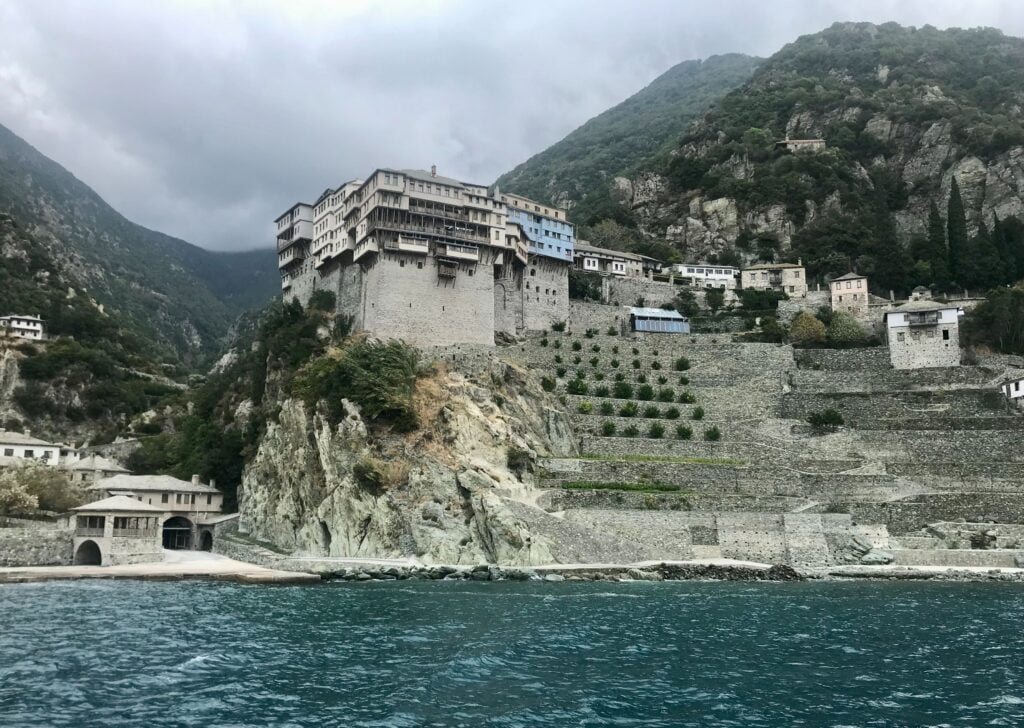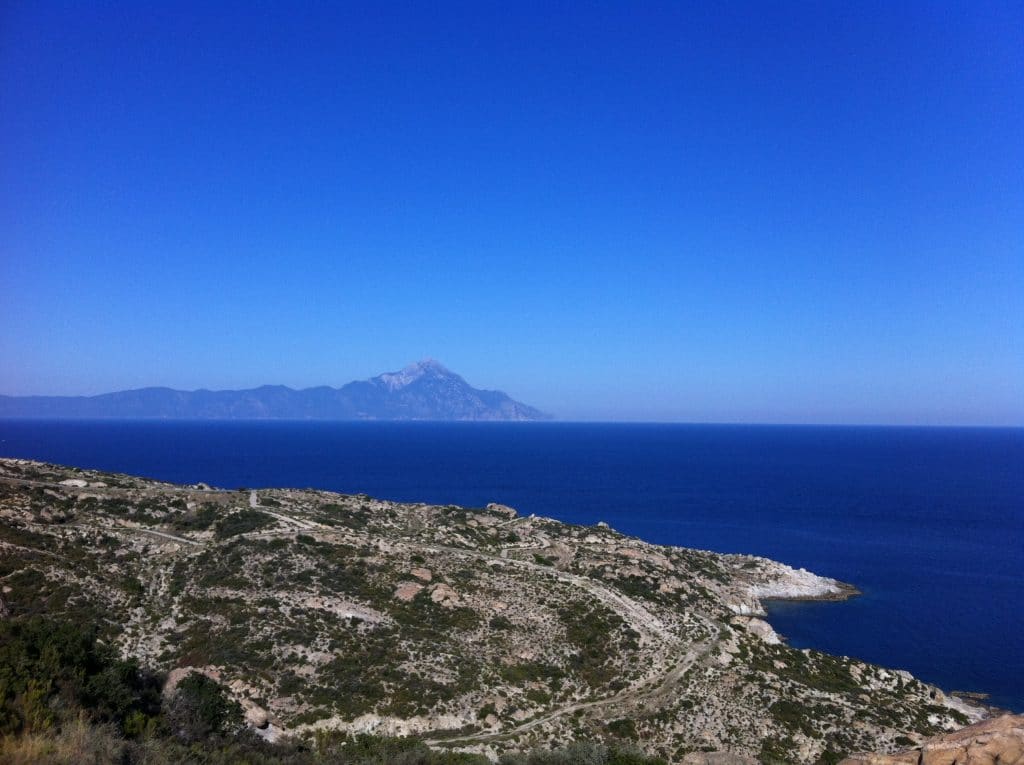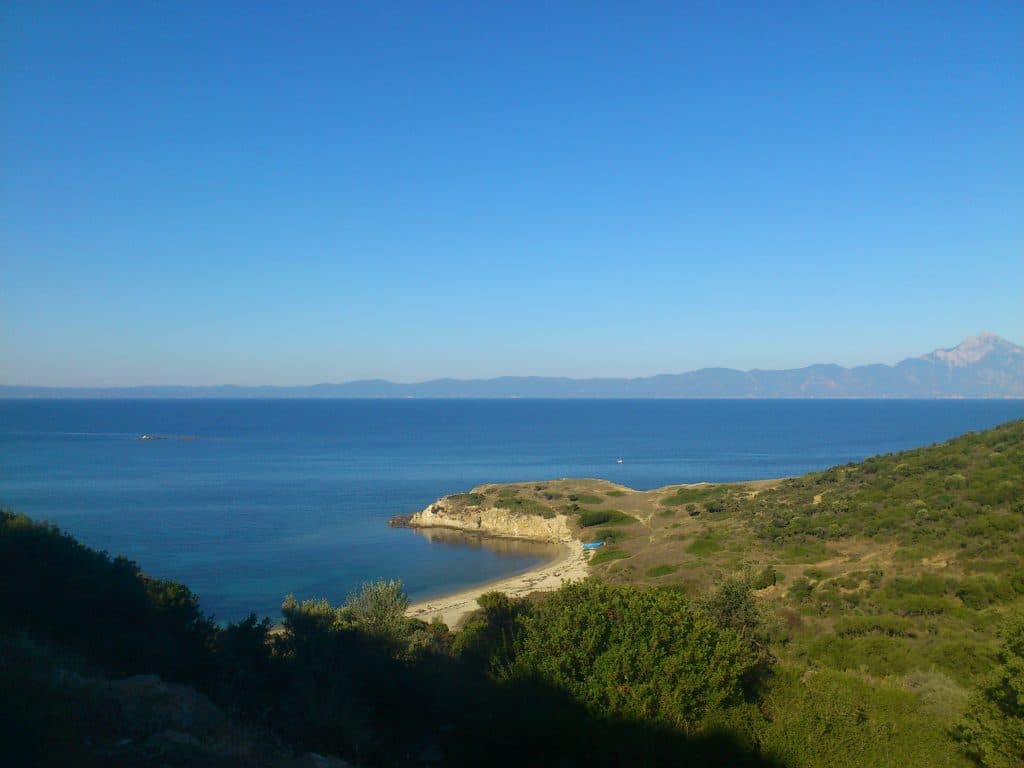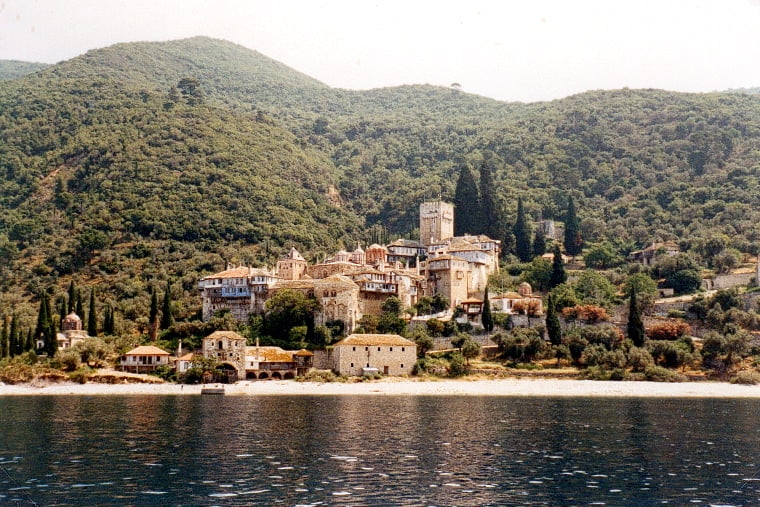Athos is one of the most beautiful and secluded regions in Greece, located in the northern part of the country. The area is known for its stunning natural scenery, with crystal-clear waters, lush vegetation and dramatic mountains. There are a number of lovely villages to explore in Athos, each with its own character and charm.
Visitors can enjoy a range of activities in the region, from hiking and swimming to boat trips and exploring the many Byzantine monasteries. If you’re looking for a place to relax and unwind, Athos is the perfect destination. With its tranquil atmosphere and natural beauty, it’s easy to see why this region is so popular with tourists.

Athos represents the third finger of the peninsulas on Chalkidiki and is named after the holy mountain there. This mountain Athos is 2033 m high and is visible even from the sea from far away. Since Athos is an Orthodox monastic republic with autonomous status, the peninsula is largely untouched and (male) tourists access is possible only after an official permit.
Inhaltsverzeichnis
Athos, the monastic republic
There are twenty major monasteries on the peninsula, which are part of the UNESCO World Heritage Site. Of the twenty major monasteries, 17 are Greek and the other three are Bulgarian, Russian and Serbian. Around the Orthodox major monasteries there is the settlement from Skiten, they each depend on a mother monastery. There are about 2,000 monks living in the monastic state of Athos.
The names of the monasteries on the peninsula:
- Stavronikita Monastery
- Simonos Petras Monastery
- Iviron Monastery
- Agiou Pavlou Monastery
- Docheiariou Monastery
- Xenophontos Monastery
- Dionysiou Monastery
- Agiou Panteleimonos Monastery
- Osiou Grigoriou Monastery
- Zografou Monastery
- Koutloumousiou Monastery
- Great Lavra Monastery
- Xiropotamou Monastery
- Karakalou Monastery
- Pantokratoros Monastery
- Konstamonitou Monastery
- Filotheou Monastery
- Esphigmenou Monastery
- Helandariou Monastery
- Vatopedi Monastery
Athos numbers, dates and fact
Highest elevation: 2,033 m
Founded: 1927
Area: 335,6 km² ( this is about 47.002 soccer fields)
Population: 1,811 (2011)
The ban on entry to the monastic republic of Athos
The ban on entry to the monastic republic of Athos generally applies only to women. Men are allowed to enter the monk’s republic only with a specific permission. Even female animals are not allowed to live on Athos, except chickens, because the monks would rather not do without the eggs:
The yolk is used for painting. You can drive to Ouranoupolis and from there start a boat tour around the Athos peninsula. The coastal strip can also be very interesting, you can see from afar some monasteries and relax on the boat.



The Xerxes Channel
In the north of the peninsula there is an isthmus, a narrow point in the land bridge, which is only about 2 km wide. In ancient times, an artificial canal is said to have been dug during the wars of the Persians against the Greeks in 480 BC. Recent archaeological investigations indicate the actual existence of the Xerxes Canal.
Years earlier, the then Persian Great King Darius I failed in his campaign against the Greeks and lost several ships of his fleet while circumnavigating the stormy southern coast of the peninsula. Before he was defeated two years later with his land army in the famous battle in the plain of Marathon. Xerxes I had the canal excavated by forcibly recruited peoples and widened to a width of 30 meters. The construction time is said to have been three years.
- The Xerxes Canal, also known as the artificial canal of Xerxes or the canal of Artemis, is a canal that was constructed in the 5th century BCE on the Isthmus of Corinth in Greece.
- The Xerxes Canal was built for two main reasons.
- First, it was meant to be a shortcut for ships travelling between the Aegean and Ionian Seas.
- Second, it was built as a defense against a possible invasion by the Greeks.
- The canal is about 6.4 kilometers long and was built by digging a trench through the Isthmus of Corinth.
- The canal is about 24 meters wide and 8 meters deep.
The Xerxes Canal was used by ships for about 200 years. However, it was eventually abandoned because it was too shallow for large ships and because it silted up over time. In modern times, the Xerxes Canal is a popular spot for swimming, fishing, and canoeing.
Photo-Credit: Aleksei Simonenko, Unsplash
